Case Summary
Lack of integration between CRM and PLM platforms was slowing down Engineer-to-Order (ETO) processes. The need for manual entry overburdened engineering teams and created errors and inconsistencies. SLK’s automation-led integration solution helped the client eliminate manual handoffs, improve accuracy, and speed up ETO part release.
The Challenge
The client dealt with a wide range of of products and services across various sectors such as process management, climate technologies, etc. This led to creation of multiple ETO requests. These requests were typically initiated in the CRM platform and then pushed to the PLM system to drive downstream design, manufacturing, or procurement workflows.
The lack of integration between the two systems meant that the engineering teams spent significant time re-entering information manually from CRM to PLM. This process was time-consuming, error-prone, and often delayed the release of new parts for manufacturing or procurement. To make matters worse, there were also frequent issues with data quality. The data entered into the CRM was often unstructured and needed manual transformation before it could be used effectively in the PLM system. These challenges delayed ETO cycles and engineering effort was tied up in repetitive, non-value-adding work.
The client needed a way to streamline this handoff and reduce dependence on manual intervention. To reduce rework, improve data accuracy, and engineer productivity, the client decided to partner with SLK.
The Solution
SLK designed and developed an automation solution for handling Change Requests (CR) in the PLM (Enovia 3DExperience platform) system. The solution ensured that once an ETO request was submitted through CRM, all relevant details were transferred directly to PLM, without any manual intervention.
A scheduled automation task ran at regular intervals (30 min), retrieving ETO data from CRM and creating the corresponding Change Request in the PLM tool. Any unstructured inputs from the CRM side were converted into structured formats using NLP-based logic, so that engineers received clean, usable data every time.
As part of the workflow, engineers were notified by email once the Change Request was ready in PLM so they could initiate the change management process and release the ETO part. This removed the need for back-and-forth communication or manual tracking.
With this integration in place, the engineering team could shift its focus from administrative work to actual engineering tasks, helping the business respond faster to customer needs.
